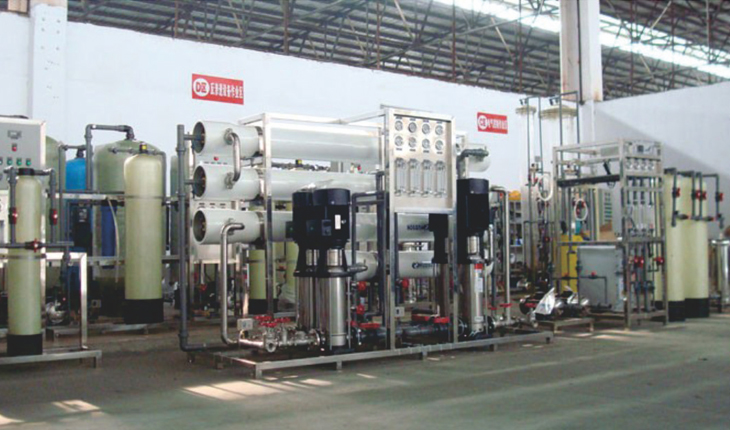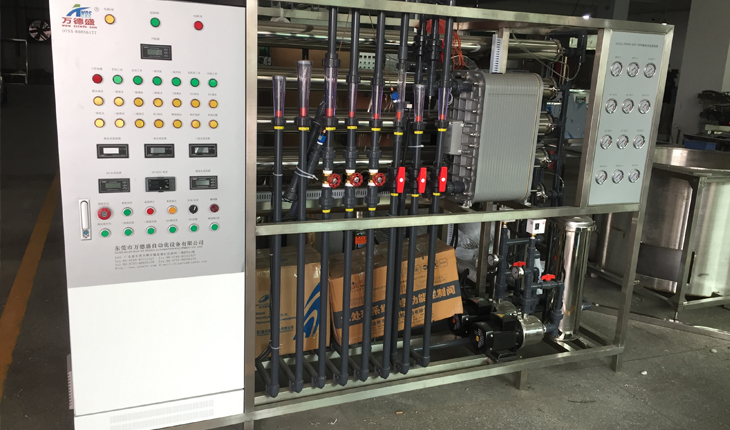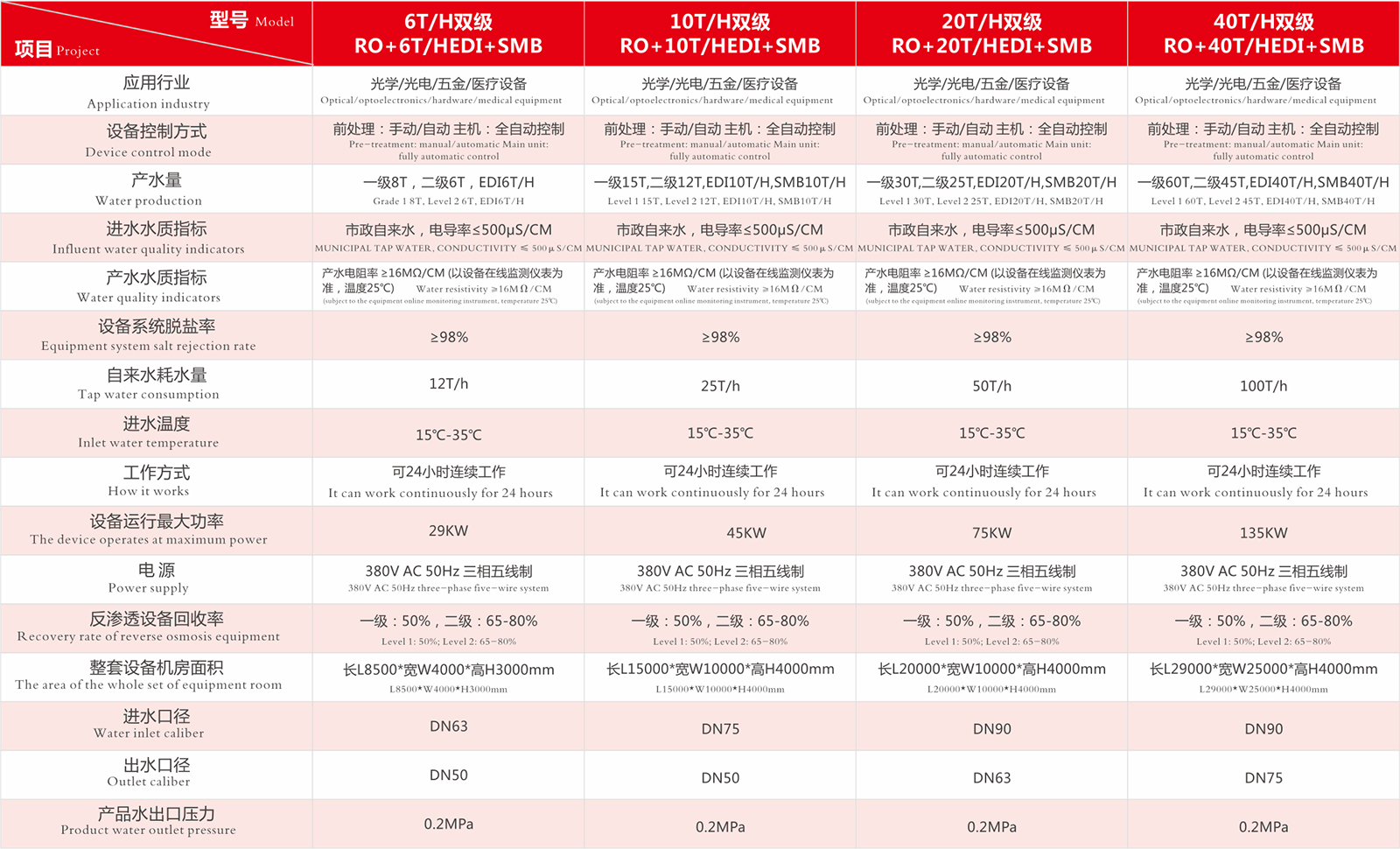EDI is a pure water manufacturing technology that combines ion exchange membrane technology and ion electromigration technology. It uses a basic unit consisting of ion membranes and ion exchange resins - membrane components. Under the action of direct current, it can continuously operate for a long time without the need for acid or alkali to regenerate the resin, and stably and reliably produce ultrapure water with a resistivity of up to 18MQ. EDI equipment is applied in reverse osmosis systems to replace traditional mixed bed ion exchange technology (MBDI) in producing stable ultrapure water.
Working principle of EDI ultra pure water treatment equipment
Electrodeionization (EDI) system is a scientific water treatment technology that primarily utilizes the direct current electric field to induce directional movement of ions in the water dielectric through the separator, and utilizes the selective permeation of ions through the exchange membrane to purify water quality. Between a pair of electrodes in an electrodialysis machine, there are usually multiple sets of alternating arrangement of negative membranes, positive membranes, and separators, forming a concentration chamber and a dilution chamber (i.e. cations can pass through the positive membrane and anions can pass through the negative membrane). Cations in the dilute room water migrate to the negative electrode and pass through the positive membrane, which is intercepted by the negative membrane in the concentrated room; In this way, the number of ions in the water of the dilution chamber gradually decreases and becomes fresh water, while in the water of the concentration chamber, due to the continuous influx of anions and cations in the concentration chamber, the concentration of dielectric ions increases and becomes concentrated water, thereby achieving the purpose of desalination, purification, concentration or refinement.






